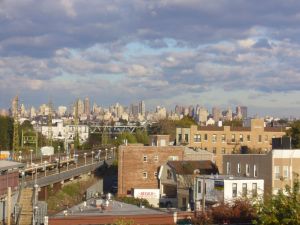Sunnyside Down: City Shrinking (or Saving?) Queens’ Most Popular Nabe
By Matt Chaban March 2, 2011 6:17 pm
reprints Last year, New York magazine, via the magic of stats wizard Nate Silver, declared Sunnyside, Queens, the third best neighboirhood in the city. The first two were obvious–Park Slope and the Lower East Side–but the choice of the (for how much longer?) working-class neighborhood just off the 7 train was a bit of a surprise.
Last year, New York magazine, via the magic of stats wizard Nate Silver, declared Sunnyside, Queens, the third best neighboirhood in the city. The first two were obvious–Park Slope and the Lower East Side–but the choice of the (for how much longer?) working-class neighborhood just off the 7 train was a bit of a surprise.
Now, the City Planning Commission is working to keep the neighborhood its quaint self while also finding a little room for all those newcomers, plus a little affordable housing. On Monday, the commission certified a plan to rezone a 130-block area in Sunnyside and neighboring Woodside stretching for five subway stops along Roosevelt Avenue.
The plan has all the usual hallmarks. Much of the two neighborhoods will be downzoned to maintain the scale and character of current housing stock while protecting it from teardowns and overdevelopment. In exchange, land on major thoroughfares will be upzoned to accomodate denser housing near transit corridors–in this case Roosevelt Avenue and Queens Boulevard–as well as to encourage affordability through the use of the city’s inclusionary housing program. This provides a development bonus if 20 percent of units are made affordable to low- and moderate-income families.
“The Sunnyside and Woodside neighborhoods have seen their populations grow in recent years because of their proximity to mass transit, attractive and vibrant streetscapes and convenient commercial corridors,” commission chair Amanda Burden said in a release. “But we must ensure that these neighborhoods grow in the right places.”
The neighborhood has not seen any major zoning changes since 1974.
One unusual twist to this effort is that a special commercial district will be established on Queens Boulevard to encourage outdoor cafes, bolstering a strip that has never fully taken to the yuppie charms of Park Slope and the Lower East Side.
But what would Edward Glaeser think? In his latest book, he argues that zoning measures like this discourage development where people want it most, driving up the cost of living in vibrant, sutainable cities. The Observer has wondered much the same thing, if the protection of Queens downscale, suburban character is not actually bad for New York.
With the successful rezoning of Auburndale, Oakland Gardens and Hollis Hills in Queens last fall, which was at the time the largest rezoning ever undertaken, and the recent certification of South Jamaica, which at 530 blocks is now the biggest, it seems the administration is set on keeping things small and expensive, if also attractive.


